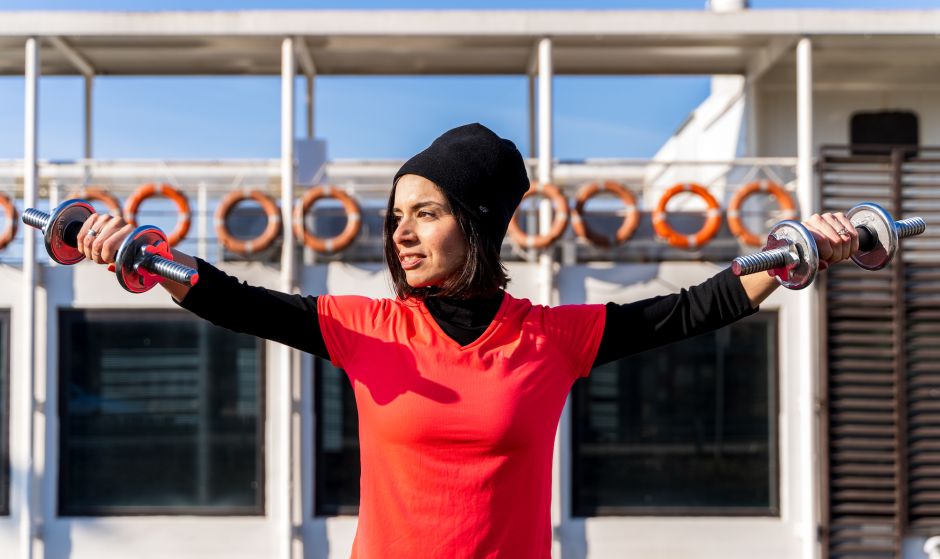Size Matters

As onboard space utilization becomes more efficient, the working and living conditions for seafarers risk deteriorating. A new pre-study, funded by the Swedish Seamen’s Foundation, examines how the EU’s new regulations to reduce greenhouse gas emissions from shipping impact life onboard.
Common spaces such as gyms, recreation rooms, and mess halls are decreasing on many ships—at least, that is how it is perceived within the maritime sector, says Elin Malmgren from IVL Swedish Environmental Institute, who led the study Does Vessel Size Matter – Policy Instruments in Maritime Transport and Their Impact on Working and Living.
"There has long been a discussion about regulations related to onboard working conditions. For example, port fees have been based on vessel size, meaning that smaller ships designed to minimize costs risk limiting crew space and worsening working conditions. Shipowners who expand space and invest in better working environments risk a penalty fee every time the ship enters a port", she explains.
The debate about how new regulations affect onboard working conditions has intensified since the maritime industry was incorporated into the EU’s Emissions Trading System (EU ETS) in 2024, alongside the implementation of the FuelEU Maritime directive, which mandates a gradual reduction in the greenhouse gas intensity of marine fuels. These regulations, part of the EU’s Fit for 55 package, are designed to complement each other and steer the maritime industry towards a lower-carbon future. However, not all vessels are covered. The Fit for 55 rules apply only to ships over 5,000 gross tons (GT), while smaller vessels are exempt. One of the study’s key questions is what this means for seafarers’ working and living conditions onboard.
"There is a strong economic incentive to stay below the 5,000 GT threshold. Between 2035 and 2040, running on traditional fuels will become significantly more expensive for those subject to penalty fees, and by 2045, it will be nearly twice as costly compared to smaller vessels under 5,000 GT", says Elin Malmgren.
There is a risk that shipping companies will start using more smaller vessels if the opportunity exists—a development that benefits neither the climate nor working conditions. There are also strong financial incentives to reduce a vessel’s gross tonnage (GT) in various ways if it is close to the 5,000 GT threshold.
"Some shipowners take responsibility and invest in better working and living conditions onboard, despite the increased costs. At the same time, conditions vary across different segments, both nationally and internationally. Those most affected are crews on transatlantic vessels, where long periods at sea place particular demands on living and working conditions."
According to the report, a reassessment of the 5,000 GT threshold and other similar GT-based regulations is needed to create policies that promote both environmental and social sustainability. Such a change could become reality—by 2026, the EU will evaluate whether smaller ships, between 400 and 5,000 gross tons, should be included in EU ETS and FuelEU Maritime.
"I hope they include all ships down to 400 GT. Anything else would be unreasonable. We are at a stage where the maritime sector needs to attract more labor and be made more appealing to different people. It is unfortunate to have distortions that penalize you for doing something good", says Elin Malmgren.
The report Does Vessel Size Matter – Policy Instruments in Maritime Transport and Their Impact on Working and Living was authored by Elin Malmgren (IVL), Johanna Larsson (VTI), Erik Fridell (IVL), and Joakim Dahlman (VTI).
-
 NextWave – en podd som ska locka unga
NextWave – en podd som ska locka unga -
 Ny studie: Eldrivna pendelbåtar kan effektivisera Stockholms kollektivtrafik
Ny studie: Eldrivna pendelbåtar kan effektivisera Stockholms kollektivtrafik -
 Sjöfartens utsläpp ökar
Sjöfartens utsläpp ökar -
 Sociala relationer påverkar val av bränsle
Sociala relationer påverkar val av bränsle -
 Sjöfartens omställning kräver ”mjukare” påtryckningar
Sjöfartens omställning kräver ”mjukare” påtryckningar -
 Hon hade avtalad tid med Kapten ynkrygg
Hon hade avtalad tid med Kapten ynkrygg -
 Lighthouse omvärldsanalys 2025 – osäkerhet och tullar präglar sjöfarten
Lighthouse omvärldsanalys 2025 – osäkerhet och tullar präglar sjöfarten -
 Se seminariet Shipping in the Marine Environment
Se seminariet Shipping in the Marine Environment -
 Vad betyder egentligen de 90 procenten?
Vad betyder egentligen de 90 procenten? -
 Hålla där...
Hålla där...

